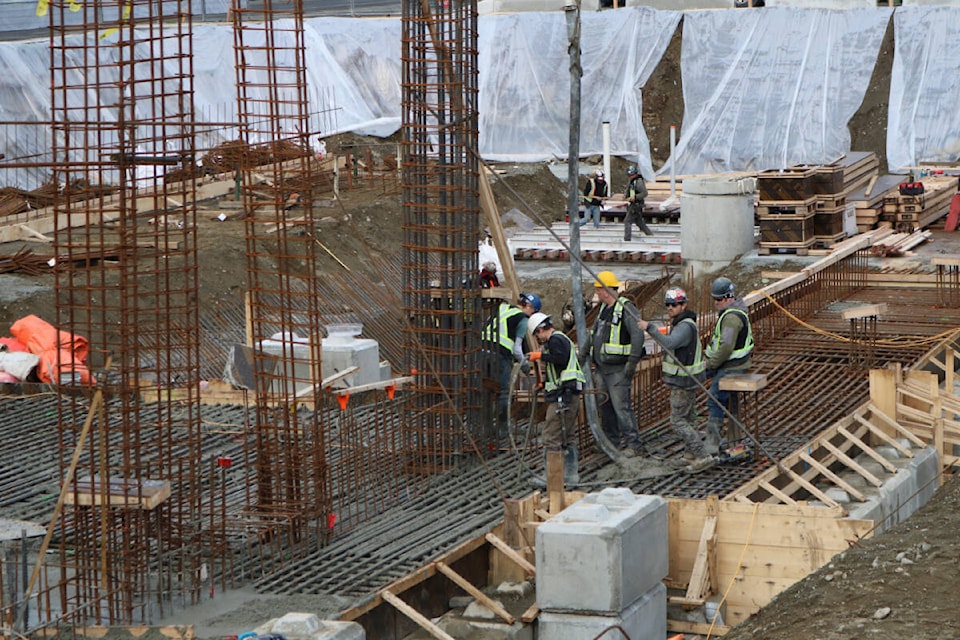Langford’s low-carbon concrete policy may have been too far ahead of its time.
City council voted to ease requirements on the policy to allow more companies to compete for city contracts during its Monday (March 6) meeting.
According to a staff report, the policy, which came into effect in June 2022, required companies to use carbon mineralization in concrete – effectively injecting carbon into concrete so it gets trapped – and reward contracts to the companies with the lowest greenhouse gas emissions.
READ MORE: New Langford low carbon concrete policy comes into force in 2022
This led to a situation in which only one local company was currently set up to use the technology, effectively granting them a monopoly on city contracts.
Instead, the new policy removes carbon mineralization as a requirement and will more gradually make the change towards lower carbon emissions with two phases. The first will see concrete in projects within Langford be required to meet an industry baseline for B.C. That figure will be reassessed annually and lowered in order to gradually cut emissions.
The second phase shifts the emphasis on building designers to better plan ways to cut emissions to targets set by the city, according to Craig Appelman, a consulting engineer with Herold Engineering who presented to council during Monday’s meeting.
One thing that would help is adjusting building codes to allow for the use of lower compressive strength concrete, which is less carbon-intensive. Injecting carbon back into concrete, as happens with carbon mineralization, is not the most effective way of reducing carbon emissions, according to Ken Carrusca, vice-president of environment and marketing at the Cement Association of Canada, who also spoke to city council on Monday. Rather, reducing concrete use overall and cutting emissions during production is more eco-friendly.
The target is for phase A to be implemented by June 1 and for Phase B to be implemented following several years of data collection in consultation with industry.
Fines are proposed for companies who fail to meet emissions targets, with $0.25 per kg of carbon dioxide the penalty for companies in excess of the baseline limit for Phase A or B, upped to $0.50 per kg if carbon emission levels are misstated.
Cutting emissions from concrete has been identified by city staff as a key way for Langford to cut meet its carbon emission reduction targets, as the city continues to grow.
Langford’s per capita greenhouse gas emissions are among the lowest in the Capital Regional District, according to the CRD’s 2020 greenhouse gas inventory, but the increase in overall emissions is the region’s second-highest.
Emissions dropped from 5.5 tonnes of CO2 in 2007 to 3.7 tonnes in 2020, putting it around the same level as Sooke, Saanich and the Salt Spring Island electoral district, CRD climate action programs manager Nikki Elliott said in a previous statement to Black Press Media.
The biggest cause is Langford’s growing population, which increased by 10 per cent between 2018 and 2020 – from 38,296 to 44,423 – and has nearly doubled since 2007, according to Elliott.
Meanwhile, its overall emissions increased 22.5 per cent compared to the 2007 baseline, the second-highest jump in the CRD, behind only the District of Highlands.
Editor’s note: This article has been changed from its original version to correct an error. The new policy removes the requirement for carbon mineralization. We apologize for the error and any confusion it may have caused.
RELATED: Langford per capita GHG emissions down, among lowest in CRD
READ MORE: Concrete pour starts construction for Langford post-secondary campus
